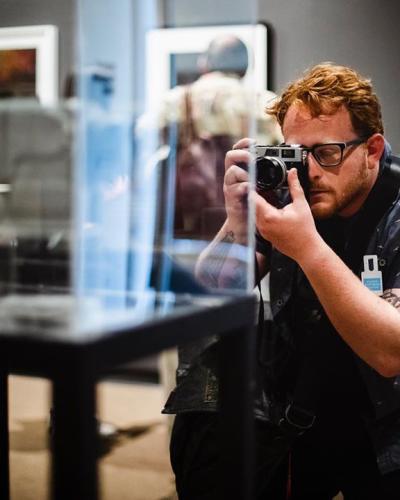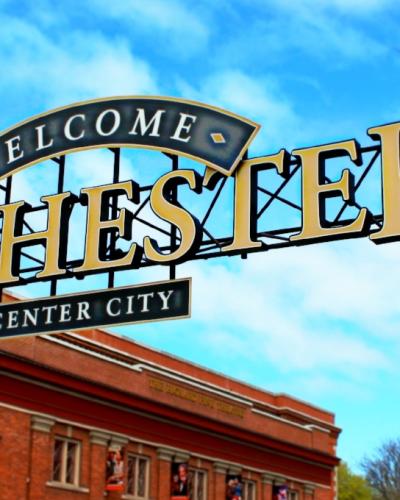City ranks among top 20 on National Arts Vibrancy Index
Rochester is one of the most arts-vibrant communities in the country, according to the National Center for Arts Research.
SMU’s National Center for Arts Research (NCAR) recently conducted its third annual Arts Vibrancy Index, which ranks more than 900 communities across the country, examining the level of supply, demand, and government support for the arts in each city.
Rochester ranked #19 on the list of most arts-vibrant large cities in the country. Of note, Rochester is the smallest city (by population) among the top-ranking communities in the large city category.
“Rochester’s recognition as one of the most arts-vibrant cities in the country affirms what we have always know – Rochester is the cultural capital of upstate New York,” said Visit Rochester President & CEO Don Jeffries. “Having a vibrant local arts community attracts visitors to our area, while also contributing to a strong quality of life for locals. This recognition would not be possible without the many passionate individuals, institutions and organizations that make the arts accessible in Rochester.”
The NCAR noted that Rochester is a rich arts community, and in its report recognized the impact that George Eastman had over 100 years ago in cultivating the arts in Rochester as a means to attract top employees to work at Kodak. Today, the NCAR notes “Rochester’s arts scene is thriving,” with special attention to Rochester’s dance, theatre and music organizations. The city’s many art galleries, museums and community art classrooms were also highlighted. Read the full NCAR Arts Vibrancy index here.
“In the current climate, it is more important than ever to recognize the vital role that the arts play in creating dynamic places to live, work, and visit, and the Arts Vibrancy Index shows us that this is the case in communities all across the country, not just in large cities and on the coasts,” said Dr. Zannie Giraud Voss, director of NCAR. “The index helps us understand what factors contribute to making an urban area artistically vibrant and culturally rich, and illustrates how vibrancy manifests in a wide variety of forms that are often tied to that community’s unique identity.” The report complements each listed community’s scores with its story of what makes it unique and dynamic.
The artists, historians, dancers, actors, writers, and musicians who call Rochester home help create an atmosphere that stimulates creativity and celebrates diversity. Museums, galleries, theaters and attractions offer special events and experiences that delight visitors from all over the world. From public art on city streets, to music, dance and theatre; Rochester is a city teeming with cultural abundance.
Rochester last appeared on the National Center for Arts Research ranking in 2015. Other top ranking cities in the “Large Cities” category (defined as a population of 1 million or more) include Washington D.C., New York City, Boston, San Francisco and Pittsburgh.
About Visit Rochester
Visit Rochester is the official tourism promotion agency for Greater Rochester and Monroe County. Visit Rochester is a membership organization with over 400 members representing, lodging, retail, restaurants, services, and community organizations. Working together with our members and partners, we strive to provide the best experience to all visitors to our community, including both business and leisure travelers.
About NCAR
In 2012, the Meadows School of the Arts and Cox School of Business at SMU launched the National Center for Arts Research (NCAR). The vision of NCAR is to act as a catalyst for the transformation and sustainability of the national arts and cultural community. The goals of the Center are to unlock insights on: 1) arts attendance and patronage; 2) understanding how managerial decisions, arts attendance, and patronage affect one another; and 3) fiscal trends and fiscal stability of the arts in the U.S., and to create an in-depth assessment of the industry that allows arts and cultural leaders to make more informed decisions and improve the health of their organizations. To work toward these goals, NCAR integrates data from DataArts and its Cultural Data Profile and other national and government sources such as Theatre Communications Group, the League of American Orchestras, the National Endowment for the Arts, the Census Bureau, and the National Center for Charitable Statistics. NCAR makes its findings available free of charge to arts leaders, funders, policymakers, researchers, and the general public.
NCAR develops reports based on this uniquely comprehensive set of arts organizations’ data. It assesses the industry from multiple perspectives, including sector/art form, geography, and size of the organization, and it determines what drives health from the organization’s conditions and its community’s characteristics. Recent publications include a white paper on diversity and equity in the arts, a white paper dispelling the myth that the arts are elitist, and reports on the health of the U.S. arts and cultural sector. In July 2016, NCAR launched the KIPI Dashboard, a free online diagnostic tool that allows arts organizations to benchmark their individual performance in nine finance and operations categories against their peers.
For more information, please visit the NCAR website at smu.edu/artsresearch.
Read more: Arts & Culture in Rochester





